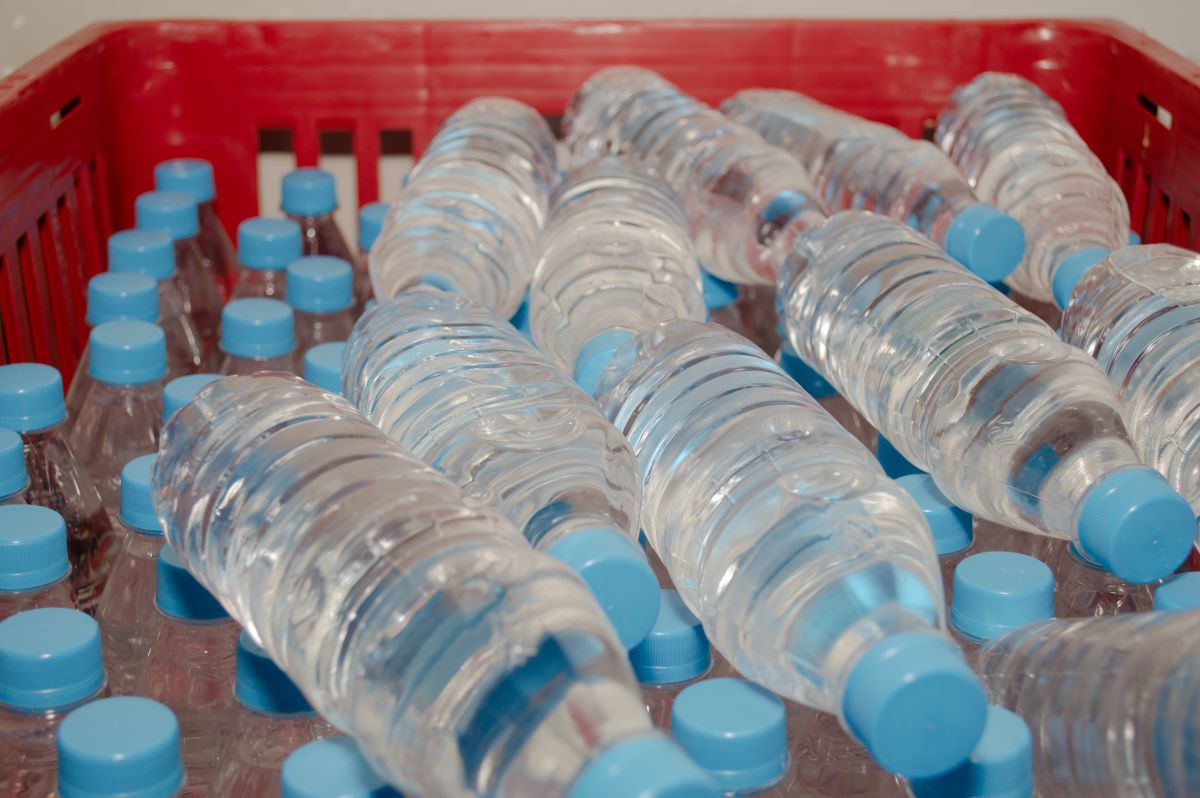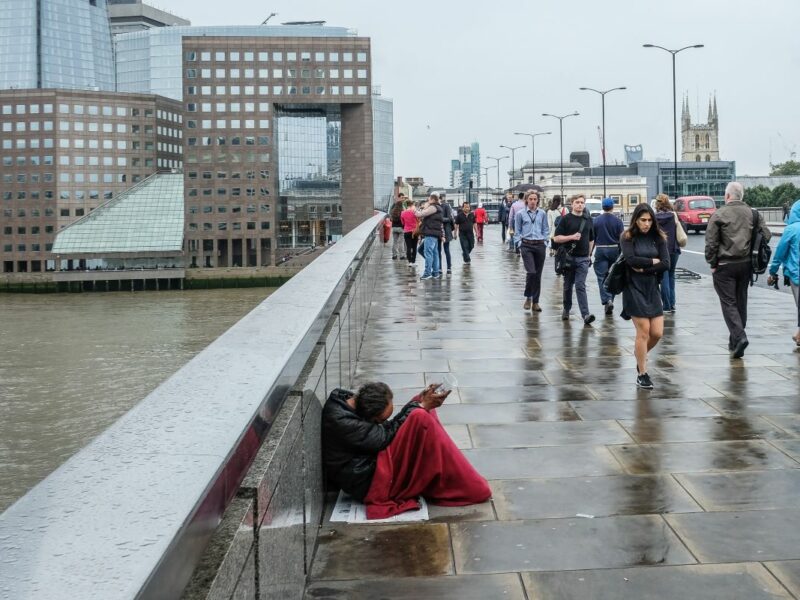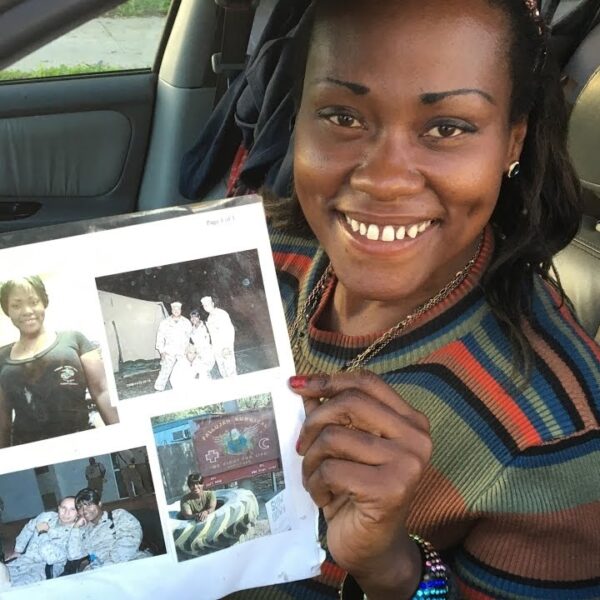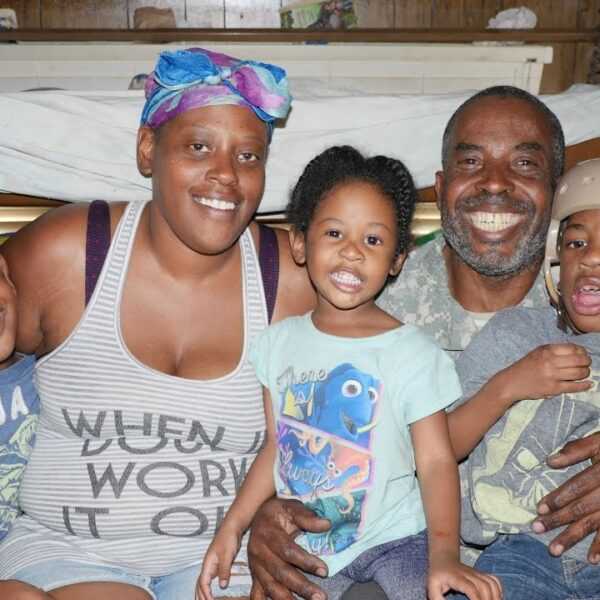Experts Weigh in on What to Hand Your Unhoused Neighbors in a Heatwave
The deleterious effects of extreme heat on the homeless population are well known. As PBS points out, summer swelters can be uncomfortable, posing risks for just about anyone, but for folks who are experiencing homelessness, these warm fronts can be deadly. In fact, in the United States of America, extreme heat beats out hurricanes, tornadoes, and floods as the leading cause of weather-related death.
Why Unhoused People Have Such an Increased Risk of Death During Heatwaves
The harsh reality of having no safe place to call a permanent home leaves its mark in various unexpected ways. One of them is an increased risk of death during excessive heat.
As heatwave warnings wash over the nation, housed residents seek refuge inside, often in air-conditioned places. However, our unhoused neighbors do not always have the same luxury.
Residents in tent cities, for example, might feel gusts of hot, stifling air wafting through their makeshift shelters as the sun bakes their living spaces from the outside in. This near-claustrophobic feeling isn’t from the confined living space but rather from the increased temperature.
Did you know that tents are always about five degrees hotter than the weather outside?
Unsheltered neighbors residing in places not fit for human habitation, such as abandoned buildings, city sidewalks, and vehicles, will also feel that hot sun long after it goes down. This is because urban architecture fosters something called the “Urban Island Effect.”
The combination of dense buildings, mile-high skyscrapers funneling the heat and sun, exhaust from vehicles and air conditioning units, and an overall absence of vegetation mean cities are statistically hotter than rural areas.
While rural and suburban homelessness is quietly creeping up across the American landscape, the vast majority of the U.S. homeless population is still concentrated in cities. Hot and unforgiving cities. Urban spaces were inadvertently designed to hold in heat well into the night.
When the entire equation is taken into account, we see that homeless people are 200 times more likely to die from extreme heat than housed people.
The Climate Crisis is Heating Our Planet, Especially in Urban Spaces. Here are some of the Consequences of Having no Shelter from the Sun.
Individuals and families experiencing homelessness might incur all of the following injuries as a result of the ever-growing climate crisis that is heating up the planet:
- Heat exhaustion
- Hyperthermia
- Heat stroke
- Exacerbation of chronic conditions such as diabetes, upper-respiratory diseases, cardiovascular diseases, and more
- Death
Experts State the Number One Life Saving Element to Give is Water
We discussed this imperative topic with people who have witnessed the atrocity firsthand. All experts we interviewed concur that water is the most essential item on this list. This is good news because water is inexpensive, easy to store, and a breeze to hand out on a hot day.
Here’s a look at what each expert had to say about it:
Director of Street Medicine Brett J. Feldman said:
“During a heat wave, water is a lifesaving item. People are exposed to the weather all day, and in LA, there are very few day centers where you can escape the heat even momentarily.”
“In the heat, insensible water losses are higher, so people may not realize they’re becoming dehydrated. This is exacerbated by many having to wear all the clothes they own. When you see this on the street, passersby think it’s a sign of mental illness, but most of the time, they just don’t have a dresser!”
“When someone is dehydrated, it affects everything. They are at higher risk for heat stroke, of course, but other health issues are worse, like asthma and COPD. Dehydration puts you at risk for kidney failure, especially if you have to take diuretics for heart failure, which is common in the homeless population.”
“The solution is easy in that they need access to clean water. Our data shows bottled water is the most common source for the homeless population, which means they rely on people to hand it out, or many buy it with their precious funds. It would help if we all handed out water freely and for cities to make public water more readily available by not turning off sources around parks.”
Sidewalk Project Founder Soma Snakeoil chimed in, stating:
“There is no real water source on the street. People do not have a way to bathe, cool down, or get drinking water. People are dependent on the water that is brought to them by the community.”
According to Soma, the lack of available water on the street has caused members of the Sidewalk Project’s outreach team to vomit during extreme heat spells. “We go home and rest and drink water afterward. Unhoused people are stuck in the heat,” she explained.
Soma even helpfully suggested some organizations you can contribute to that are already helping.
“We are big fans of WaterDropLA, whose whole mission is bringing water to the people. The city and county have really fallen down in this regard, and every year around this time, we start seeing the dangerous effects of the heat,” says Soma.
She followed up that commentary by stating: “The Refresh Spot is a good place to shower and use the bathroom and get some water, but not everyone is able to get themselves there. I suggest supporting the Refresh Spot and WaterDropLA, but getting water to any mutual aid organization, ourselves included, is a necessity. We also ask people to carry water in their car and hand it out when they see unhoused folk.”
When it comes to carrying water and handing it out, our very own Mark Horvath has some pointers as well:
“I freeze bottles at night,” Mark of Invisible People explained, adding, “You can call around to local grocery stores to see if they chill cases of water. Some will. If you don’t have the time or desire to hand out water, donate money to mutual aid groups so they can hand out water.”
Rita Dunn, an expert who has recently experienced homelessness, has some helpful insight into the ways that people can use water:
“Drink a gallon of water first thing in the am, and you will be hydrated all day and not get thirsty. If you have a motorhome or have access to a freezer, I used to take a beach towel and soak it, fold it in half and then put the wet towel in a heavy-duty trash bag, flat, where I’d roll it up like a sleeping bag and stick it in the freezer for awhile. Once it’s frozen, unroll it on the ground, and dogs will love it, keeping them nice and cool.”
*That last point is of vital importance. We must remember that homeless people and their homeless pets are experiencing this heatwave, which can pose serious threats.
Merideth Spriggs, M.Div, who serves the public as Chief Kindness Officer at Caridad Charity, also professed water as the most essential item:
“I think the best thing to donate in summer months is water, literally, so people don’t die. In Las Vegas, we have individuals who will pass out in a spot, not hydrate and literally die of dehydration as the sun moves. The easiest way to get water to a nonprofit if you aren’t going to personally hand out waters or deliver the waters is to order online and have them shipped to a location.”
Water is Certainly the Top Essential Item for Distribution. Experts Say Other Items Can Help Too.
“I think other essential items are hand sanitizer or baby wipes, toilet paper, band-aids, a packet of triple antibiotics, alcohol wipes, new white tube socks, ChapStick, sunblock, a soft protein like a Mike and Larry’s protein cookie, and squeeze fruit packets. Those are just a few essentials I think are good for survival street kits,” Meredith Spriggs said.
Rita Dunn, with lived experience, emphasized the need for all of the following items:
- Sunscreen
- Two-sided emergency blankets
- White socks
- Shirts
- Handheld fans
- Pet items
She also offered suggestions for people experiencing homelessness during these heatwaves:
“Days like these, where it is deadly hot, you’ll find that people experiencing homelessness are more nocturnal. It’s easier to sleep through the heat of the day and be up and moving when it’s cool.”
“As far as living spaces go, tents are the worst. Highly flammable and absorb heat like crazy. The best thing is to face the door away from the sun, and I would use emergency blankets over the top of my tent. Stretching them over the top of a tent in layers with about a foot of room between will keep the heat from building inside the space. Some emergency blankets have two sides, one for hot and one for cold. Shiny or silver side out in summer to reflect heat away.”
“Erecting some sort of barrier to absorb the heat is critical. Just remember, plastic is extremely flammable, and so is vinyl. Tents and motorhomes are prone to catching fire.”
Homeless Pets Are Extremely Hot as Well
Rita Dunn also made a point to mention homeless people’s pets, as they too are experiencing the potentially hazardous heat.
“It is very dangerous for pets as well when it is hot. Make sure their water is cool, and leaving them in a vehicle is pretty much a death sentence and illegal when it’s hot like this. Dogs like to dig a little hole in the dirt and get into the cool layer, or they like to lay under motorhomes, so be mindful.”
*Pro Tip: Just Ask
If you’re not sure what your homeless neighbor needs to feel safer in a heatwave, don’t be too shy to ask. These are your neighbors, after all, and sometimes, even if you don’t have money, a listening ear can be an instrumental tool.
Speaking of money, cash is always an excellent option. It allows the person experiencing homelessness to purchase items they personally need, which could be different from items listed above.
For example, Rita said Great Stuff expanding foam helps fill the cavities between the exterior and interior of vehicles. However, this fix applies only to people experiencing that very distinct type of homelessness.
Acknowledging that each homelessness situation is unique demonstrates that needs can vary greatly from one person to the next.
Contact Your Local Legislators About Making Housing a Human Right
It might feel good to give in the moment. However, always remember that any aid and assistance offered to the homeless community is a temporary fix. That is unless it is the aid of long-term, permanent housing. In the words of Brett Feldman, “What would help more are day centers and the most is housing!”
Soma of the Sidewalk Project professes, “The water situation has always been an issue, but the heat continues to rise without the infrastructure to address it.”













